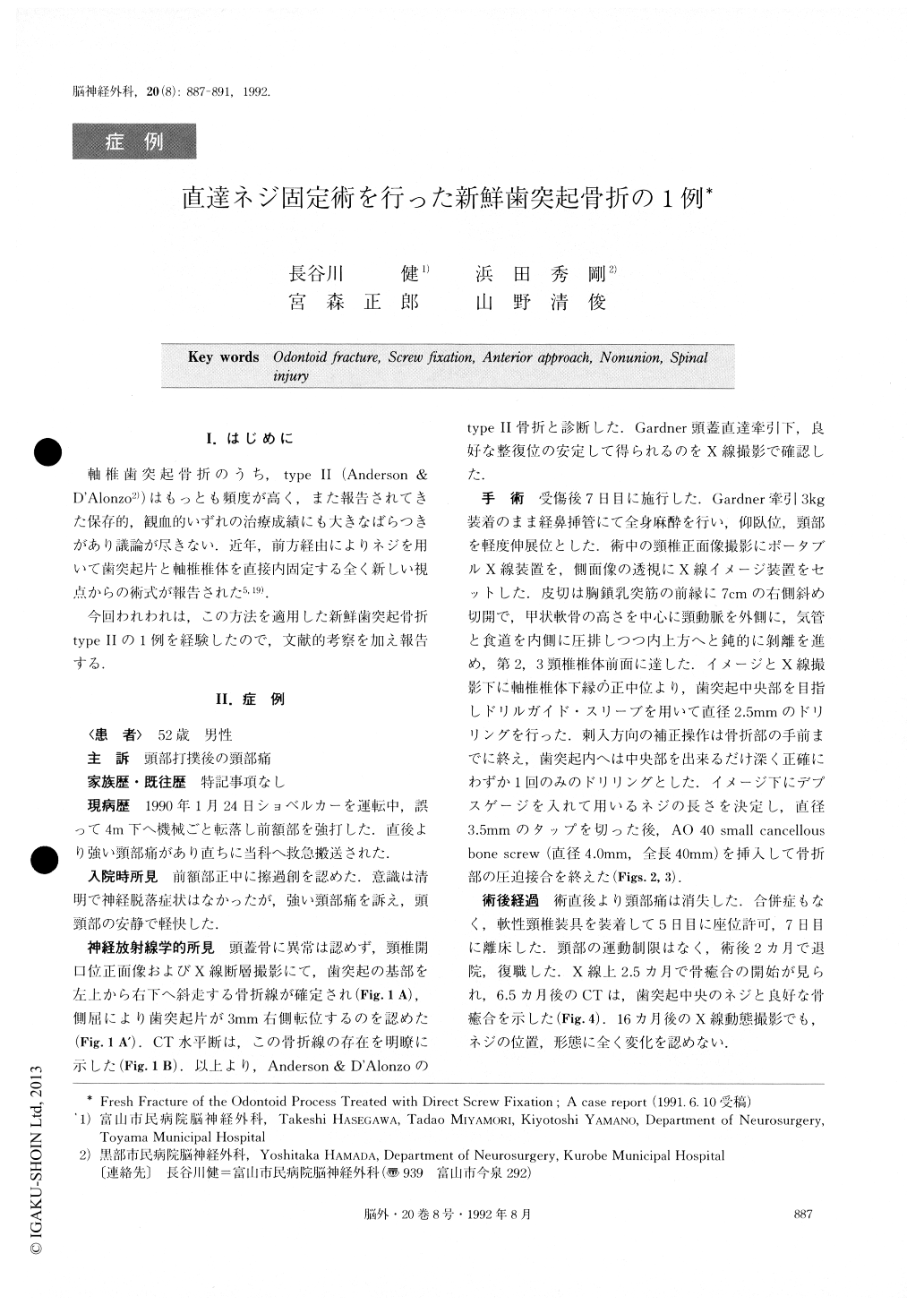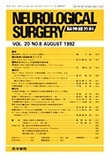Japanese
English
- 有料閲覧
- Abstract 文献概要
- 1ページ目 Look Inside
I.はじめに
軸椎歯突起骨折のうち,type II(Anderson & D'Alonzo2))はもっとも頻度が高く,また報告されてきた保存的,観血的いずれの治療成績にも大きなばらつきがあり議論が尽きない.近年,前方経由によりネジを用いて歯突起片と軸椎椎体を直接内固定する全く新しい視点からの術式が報告された5,19).
今回われわれは,この方法を適用した新鮮歯突起骨折type IIの1例を経験したので,文献的考察を加え報告する.
A case of a fresh type II fracture (Anderson & D'Alonzo) of the odontoid process treated with direct screw fixation is reported.
A 52-year-old man complained of severe neck pain following a hit on his forehead incurred in a falling accident. Neurological examination was normal. Carvi-cal spine x-ray films and axial CT scans revealed a fracture at the base of the dens. It was slightly oblique leftup and rightdown, and the dens fragment was dis-placed 3mm lateral to the right. One week after the in-jury, this odontoid fracture was directly fixed with a compression screw by an anterior cervical approach. Immediately after the operation, his neck pain dis-appeared. He had only 4 days of bed rest and 2 months of external immobilization with a simple neck collar. He returned to his previous job 2 months after surgery without any limitation of his neck movement. At fol-low-up examination 16.5 months after the operation, x-ray films demonstrated complete fusion of the fracture and no problem about the screw such as displacement or breakage.
Direct screw fixation of an odontoid fracture via a transcervical approach was thought to be a reasonable method of treatment. For proper assembly of this method, the following two points are particularly recommended : a screw insertion perpendicular to the fracture plane and the use of an optimal screw with both the desired total and thread lengths.

Copyright © 1992, Igaku-Shoin Ltd. All rights reserved.


